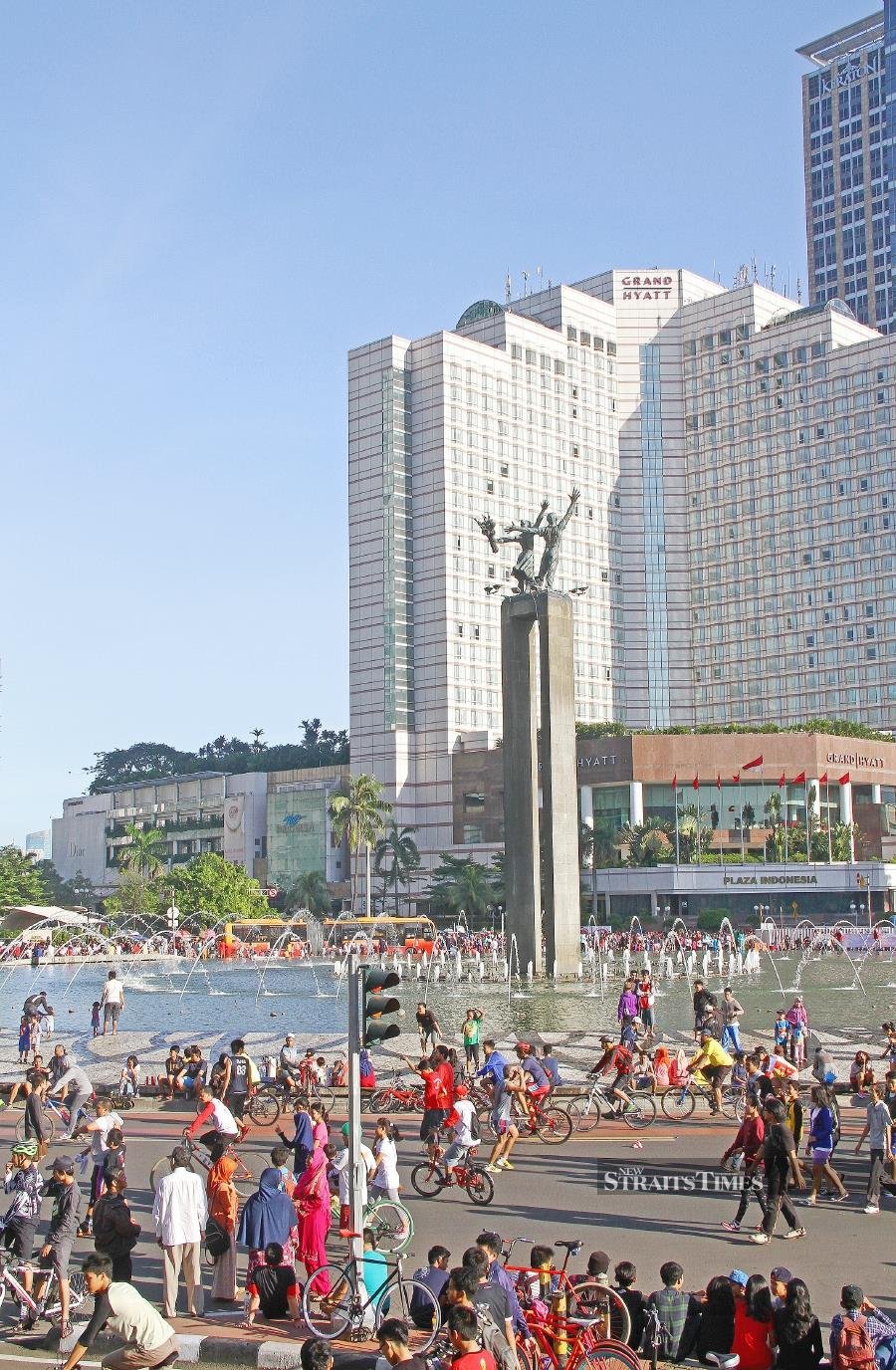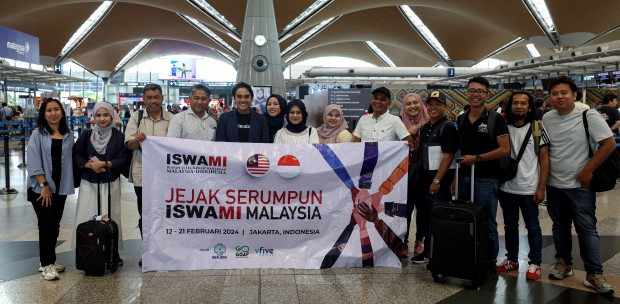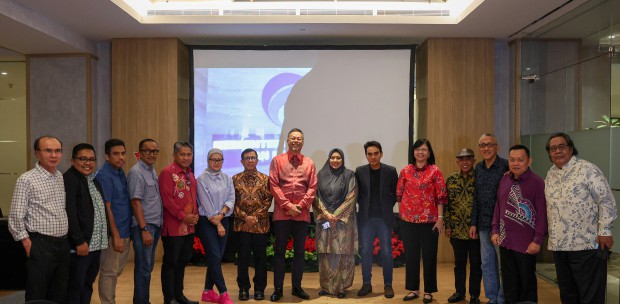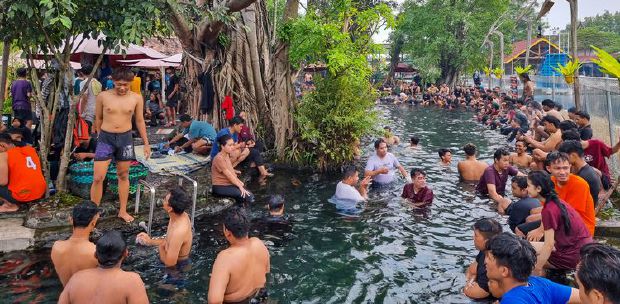Asia has many cities that we all want to visit. While Jakarta may not be at the top of most people's list, it certainly does have some fascinating attractions, especially the city's old port district.
Jakarta is well known for its urban sprawl and notoriously jammed traffic but if you lower your horizons and reduce your range of movement, there is a lot to discover in certain city precincts.
Batavia, as Jakarta was formerly known, had a colourful and rich past as it was an integral link in the spice trade that extended from Asia all the way through to Western Europe.
With this in mind, I travel to Jakarta to learn more about its early history as the Dutch port of Batavia.

HISTORIC PORT
Portuguese, Spanish and Dutch galleons set sail from various European ports in the late 16th century.
They settled in the East in the early 17th century with the Indonesian capital of Jakarta established by Dutch traders of the Dutch East Indies Company in 1619.
The main port in the Dutch East Indies (Netherlands-Oost Indie) was named Batavia. The Dutch established a settlement on the coastal lowlands that are now present-day Jakarta.
The coast must have been covered in mangroves and these would have been cleared to establish the town's rudimentary infrastructure.
The result was a settlement fronting canals reminiscent of Amsterdam that were eventually tree-lined to symbolise Dutch colonial might and enterprise.
The Dutch used coercion and force to establish their rule which stayed in force until 1946.
While Java was the jewel in the colonial crown, it was difficult for the Dutch to gain a real foothold beyond the coastal parts. Therefore, the colonialists worked closely with local rulers to maintain law and order.
While the capital's modern skyscrapers now reach high above the city, Batavia began as a port protected by a fortress.
Although the old port of Batavia, in the Sunda Kelapa precinct, is not as important as it once was, it is still a functioning port where visitors can admire small boats being loaded and unloaded to service the many small islands that surround Java.
Sunda Kelapa is where the action occurs and where traditional sailing boats known as pinisi pull into the wharves to load or unload their precious cargo from, or destined to, numerous outer islands.
Due to their small size, transferring goods from boat to wharf is a manual activity involving many labourers.
Located at the mouth of the not-so-clean Ciliwung River, Sunda Kelapa remains the cradle of Batavia and this part of the island of Java.
Batavia flourished in the 17th century with the Dutch East Indies Company championing trade from Asia to Europe. Later, under Sir Stamford Raffles, the British continued to trade through Batavia.

HISTORIC HOME
While Jakarta is popular with business travellers, it is often overlooked as a leisure destination despite having many appealing tourist attractions. It's difficult not to notice the traffic cramming most arterial roads in Jakarta.
With greater Jakarta's population exceeding 17 million, moving people and goods within the city is not so easy. However, it's not as bad as I thought and like many large cities, choosing where to stay and when to travel is important.
It is with this knowledge that I take a slightly different approach to appreciating the historic port area of present-day Jakarta.
While Jakarta's public transport network is improving, being able to walk anywhere in tropical Jakarta is a rarity, but in my research, I track down a hotel that is close to what I want to see.
The Mercure Jakarta Batavia is just a short walk from many of the heritage buildings that are on my list.
Some of these historic sites include the Jakarta History Museum, various maritime museums and Fatahillah Square with its museums, galleries and restaurants.
The square really is the place to head to as there is almost enough here to distract you for the whole day.
I arrive quite early (the sun rises about 6am, so earlier than Malaysia) and while I arrive before the attractions open, it is already quite lively at 9 am.
Museum Sejarahan is worth visiting as it offers interesting background information on Batavia and Dutch colonial rule during the early 18th century. The building was erected in 1710 as the Town Hall.
Old cannons are an important part of early history as settlements needed to be protected. One cannon that fascinates is 'Si Jagur' which was made in 1641 by N.T. Bocarro in Macau in order to strengthen the Portuguese fort in Malaka (the way Melaka or Malacca is spelt in Indonesia).
However, the Dutch seized the cannon and brought it to Batavia to protect Batavia Castle (fort).
There is an inscription on the cannon, although it can't be seen from the vantage point at ground level, which states in Portuguese; 'I was created from my own self'.
While admiring the cannon, with its powerful fist, I wonder if the name of 'si jajar' is the origin for a Malay word, 'jaja' for guard.
Another museum of interest here is the Museum Wayang which celebrates the traditional shadow performance typically performed in several regional countries.
There is a small entrance fee to this museum and others with opening times mostly being 9am to 5pm although it is closed on Monday. Taking a break in Café Batavia is highly recommended.
My visit to Jakarta is on the weekend and I can't recommend highly enough to head down to the centre of the city on Sundays.
Every Sunday, the main street and immediate area around the Welcome Monument (Jalan Sudirman) are closed to Jakarta's traffic and tens of thousands of people take the streets back to cycle, jog or parade for all to see (up until noon). There's a great fun carnival atmosphere and bikes are available for hire.
One of the advantages of a big city is that there are many restaurants, shops, shopping malls and nightclubs to visit and happening Jakarta certainly doesn't disappoint.
This is not my first visit to Jakarta but one that shows me several tranquil refuges that I didn't think could be possible in a city of its size.

FAST FACTS
How to get there
Travelling to Jakarta is easy as it is a two-hour flight from Kuala Lumpur.
The Jakarta Inner Ring Toll Road passes close to the Mercure Batavia for an airport transfer of less than 30 minutes. The Mercure is also close to Glodok business district, Mangga Dua Shopping Area and Glodok Electronic Centre. There is a night market along Jalan Kunir.
Transportation is a key consideration in Jakarta and using either Grab or taxis such as Blue Bird are recommended although the public transport system is getting a lot better.
Where to stay
Mercure Jakarta Batavia (www.mercurebatavia.com-jakarta.com) is a very smart hotel within walking distance of Fatahillah Square. Its Malaka Restaurant serves local, Asian and Western favourites with ox-tail a specialty. The semi-covered pool and surrounding bar is the place to relax after a day's sightseeing.

Fly to Indonesia at lower prices with Malaysia Airlines Promo Code




